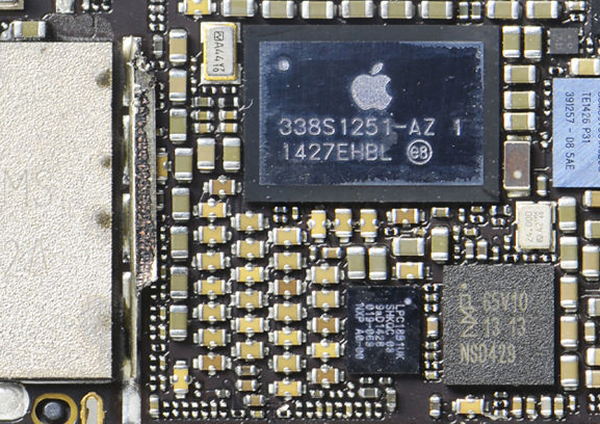
October 16, 2016 at 5:36 p.m. PST
The iPhone 6 and 6 Plus are susceptible to a manufacturing defect affecting the touch screen controller. This article looks at how to fix iPhone 6 and 6 Plus “touch disease”.
It turns out that there was some truth to “bendgate”, the furor over the iPhone 6 and 6 Plus bending easily. It takes an enormous amount of force to permanently deform an iPhone 6 or 6 Plus. The iPhone 6 and 6 Plus are flexible, and their internal components are subject to stress from flexing forces. Even though, with normal use, you might not deform the outer case of your iPhone, internal components can still be damaged. Let’s take a look at what “touch disease” is and how to fix it.
What is Touch Disease?
“Touch disease” is damage sustained to the iPhone 6 and 6 Plus touch controller from physical stress. This can happen over time with normal use. Pocketing your iPhone will subject it to physical forces that flex the device. For example, if you put your iPhone in your pocket and sit down, the pressure can flex it. This won’t permanently deform your iPhone. Over time, it may cause the touch controller to separate and lose contact with the main logic board. “Touch disease” renders your iPhone 6 or 6 Plus completely useless. At best, you can use Siri, but most of your iPhone’s functionality is inaccessible.
iPhones that are affected by “touch disease” display a flickering gray bar at the top of the screen. The screen no longer registers any touch input. Gestures and taps simply don’t work.
The iPhone 6 Plus is more susceptible to “touch disease”. The larger iPhone model features an aluminum casing with the same thickness as the standard model. This puts even more stress on the touch controller.
There’s no data on exactly how many users are affected by “touch disease”. The evidence that exists seems to indicate that it’s a widespread problem. According to AppleInsider, “touch disease” accounts for 11% of Apple Store service requests. The iPhone 6 Plus suffers from three times as many incidents of “touch disease” as the smaller iPhone 6.
“Touch disease” is a widespread problem. Apple’s design flaw has resulted in angry customers and a class action lawsuit pending against Apple. We’ll take a look at how to join the class action lawsuit later in this article. Before you pursue this litigious path, there may be an easier option.
Does Touch Disease Affect iPhone 6 and 6 Plus Resale Value?
The good news is that, despite this manufacturing flaw, resale value of iPhone 6 and 6 Plus models seems to be unaffected. Buyers such as Gazelle are still paying a fair price for these iPhones, as long as they are in good condition. Needless to say, if your iPhone is affected with “touch disease”, you probably won’t be able to sell it.
Try to Get a Replacement from the Apple Store
Apple has been known to replace iPhone 6 and 6 Plus devices suffering from “touch disease”. It’s worth the effort to take your iPhone to the local Apple Store and find out how they will handle the problem. I would even recommend trying this again if you were rejected the first time. “Touch disease” is notorious and, with a pending lawsuit, Apple may be more willing to accommodate users.
Someone on social media informed me that the Apple Store replaced a “touch disease” plagued iPhone 6 Plus, even though it was well past the warranty period. They said if it happened again, they wouldn’t replace it. Given that this is a design flaw, it could very well happen again.
If you’re not within proximity of an Apple Store, you can try contacting Apple’s customer support. For more information, visit Apple’s customer support website.
Third-Party Repair Services Can Fix Touch Disease
“Touch disease” can be cured, but the Apple Store doesn’t have the ability to fix it. Fixing “touch disease” requires advanced tools and knowledge. Ironically, the Apple “geniuses” don’t have the equipment or skills to fix it. You’re not out of luck. Third-party repair shops are capable of fixing “touch disease”.
Unlike fixing a broken screen or replacing the battery, repairing the touch controller is not routine service. There aren’t a lot of repair services capable of fixing it. After doing a Google search, I found that Microsoldering.com is both familiar with this issue and has fixed several iPhones. Repairing the touch controller costs $150. It’s expensive, but if you need your iPhone to work and Apple refuses to fix it, it may be worth it.
Join the Class Action iPhone 6 Touchscreen Defect Lawsuit
If you have to spend $150 to fix your iPhone 6 or 6 Plus, you deserve to be compensated. Although your iPhone is likely out of warranty, “touch disease” is due to a design flaw. It’s not your fault. “Touch disease” occurs with normal usage. It happens because the iPhone 6 and 6 Plus are simply too flexible. Newer iPhones have addressed this problem, but Apple hasn’t taken accountability.
The law firm of McCune Wright has filed a class action lawsuit against Apple. Anyone affected by “touch disease” can join the class action suit. Simply visit the McCune Wright website and complete the short online form.



